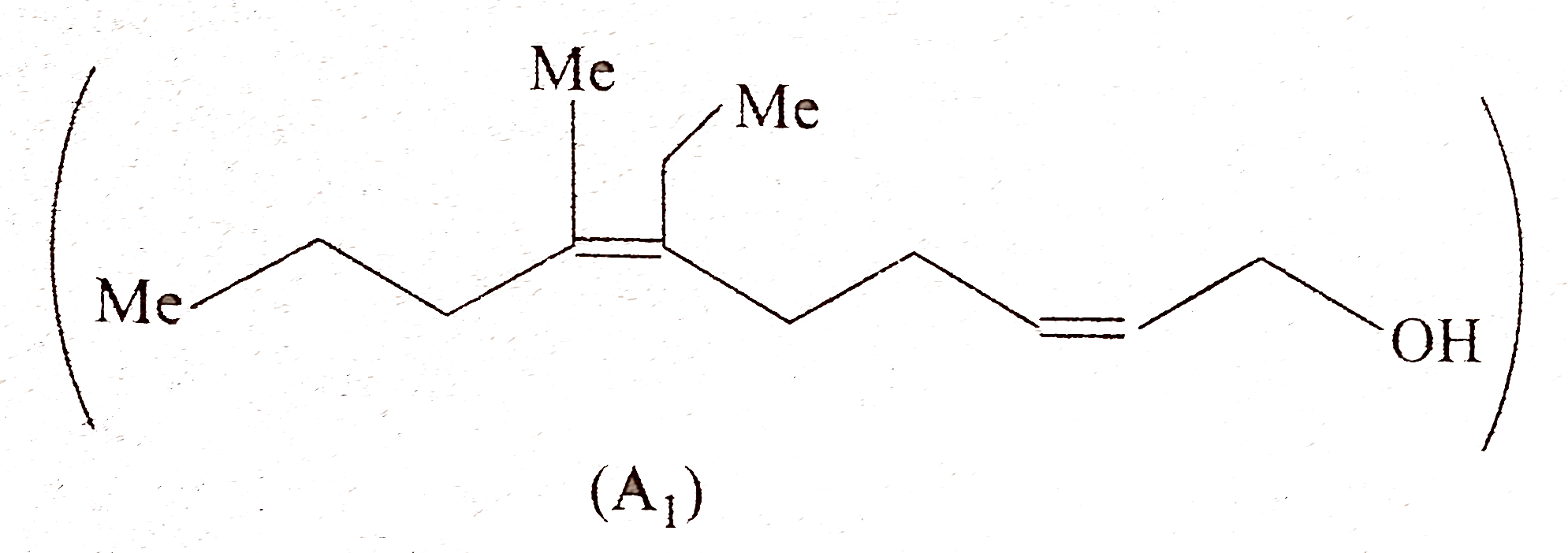Which of the following compounds show stereoisomers?
a. 2-Bromo spiro [4.5] decane
b. 8-Chloro spiro [4.5] decane
To determine which of the given compounds show stereoisomerism, we will analyze the structures of both compounds: 2-Bromo spiro (4.5) decane and 8-Chloro spiro (4.5) decane.
1. Understanding Stereoisomerism:
- Stereoisomers are compounds that have the same molecular formula and connectivity of atoms but differ in the spatial arrangement of atoms. For a compound to exhibit stereoisomerism, it must have at least one chiral center (a carbon atom bonded to four different groups) or a lack of symmetry (no plane of symmetry).
2. Analyzing 2-Bromo spiro (4.5) decane:
- Draw the structure of 2-Bromo spiro (4.5) decane. The spiro compound consists of two rings sharing one common carbon atom.
- In this case, the bromine atom is attached to the second carbon of the spiro compound.
- Check for chirality: The carbon atom to which the bromine is attached is bonded to different groups (the two rings and the bromine), making it a chiral center.
- Since it has a chiral center, this compound can exhibit stereoisomerism.
3. Analyzing 8-Chloro spiro (4.5) decane:
- Now, draw the structure of 8-Chloro spiro (4.5) decane. Here, the chlorine atom is attached to the eighth carbon of the spiro compound.
- Check for chirality: The eighth carbon is bonded to a chlorine atom, a hydrogen atom, and two other carbons (from the rings). However, if we analyze the symmetry of the structure, we can see that there is a plane of symmetry that divides the molecule into two equal halves.
- Because of this plane of symmetry, the compound does not have a chiral center and therefore does not exhibit stereoisomerism.
4. Conclusion:
- From the analysis, we find that 2-Bromo spiro (4.5) decane shows stereoisomerism due to the presence of a chiral center, while 8-Chloro spiro (4.5) decane does not show stereoisomerism due to the presence of a plane of symmetry.
- Therefore, the answer is that only 2-Bromo spiro (4.5) decane shows stereoisomers.
Final Answer:
a. 2-Bromo spiro (4.5) decane shows stereoisomers.
- Stereoisomers are compounds that have the same molecular formula and connectivity of atoms but differ in the spatial arrangement of atoms. For a compound to exhibit stereoisomerism, it must have at least one chiral center (a carbon atom bonded to four different groups) or a lack of symmetry (no plane of symmetry).
- Draw the structure of 2-Bromo spiro (4.5) decane. The spiro compound consists of two rings sharing one common carbon atom.
- In this case, the bromine atom is attached to the second carbon of the spiro compound.
- Check for chirality: The carbon atom to which the bromine is attached is bonded to different groups (the two rings and the bromine), making it a chiral center.
- Since it has a chiral center, this compound can exhibit stereoisomerism.
- Now, draw the structure of 8-Chloro spiro (4.5) decane. Here, the chlorine atom is attached to the eighth carbon of the spiro compound.
- Check for chirality: The eighth carbon is bonded to a chlorine atom, a hydrogen atom, and two other carbons (from the rings). However, if we analyze the symmetry of the structure, we can see that there is a plane of symmetry that divides the molecule into two equal halves.
- Because of this plane of symmetry, the compound does not have a chiral center and therefore does not exhibit stereoisomerism.
- From the analysis, we find that 2-Bromo spiro (4.5) decane shows stereoisomerism due to the presence of a chiral center, while 8-Chloro spiro (4.5) decane does not show stereoisomerism due to the presence of a plane of symmetry.
- Therefore, the answer is that only 2-Bromo spiro (4.5) decane shows stereoisomers.
a. 2-Bromo spiro (4.5) decane shows stereoisomers.
Topper's Solved these Questions
- ALKANES AND CYCLOALKANESBOOK - CENGAGE CHEMISTRY ENGLISHCHAPTER - ALKANES AND CYCLOALKANESEXERCISE - SOLVED EXAMPLES
19 Videos
- ALKANES AND CYCLOALKANESBOOK - CENGAGE CHEMISTRY ENGLISHCHAPTER - ALKANES AND CYCLOALKANESEXERCISE - EXERCISES
24 Videos
- ALKENES AND ALKADIENESBOOK - CENGAGE CHEMISTRY ENGLISHCHAPTER - ALKENES AND ALKADIENESEXERCISE - Single correct Answer
14 Videos
Similar Questions
Knowledge Check
Which of the following compounds will react with Na to form 4,5-diethyloctane?
ACH3CH2CH2CH2BrBCH3CH2CH2−C∣CH3H−CH2CH2BrCCH3CH2CH2CH2−C∣BrH−CH3DCH3CH2CH2−C∣BrH−CH2CH3Which one of the following is a diastereomer of (R)-4-bromo-cis-2-hexene ?
A(S)-4-bromo-cis-2-hexeneB(S)-5-bromo-trans-2-hexeneC(R)-4-bromo-trans-2-hexeneD(R)-5-bromo-trans-2-hexeneWhich of the following is equivalent to 82⋅40.5?
A27B44.5C82.5D162
Write down structure of the following compounds:
4-chloro-2-pentyne
View SolutionWrite down structure of the following compounds:
5-bromo-3-hexanol
View SolutionDraw the structure of following compounds:
a. 2-Isopropyl-7-chlorobicyclo [2.2.1] heptane
b. 6-Ethan-3-Iodo bicyclo [3.2.0] heptane
c. 3-Methan tricyclo [3.2.1.0] ocation-3-ol
d. 1,4,6,9-Tetramethyl spiro [4.4] nonane
e. Bicyclo [2.2.1] heptane
View SolutionWrite down structure of the following compounds:
1-chloro-5-methyl-2-hexanone
View SolutionCompound (A)(C13H24O) is a sex − attractant pheromone two molar equivalents of H2 and is converted to 3−ethyl−7−methyl decan −1−ol. On reductive ozonolysis, it gives the following compounds.

(A) shows two structural isomers, one structure is :

The other structure (A2) is :
View Solution
